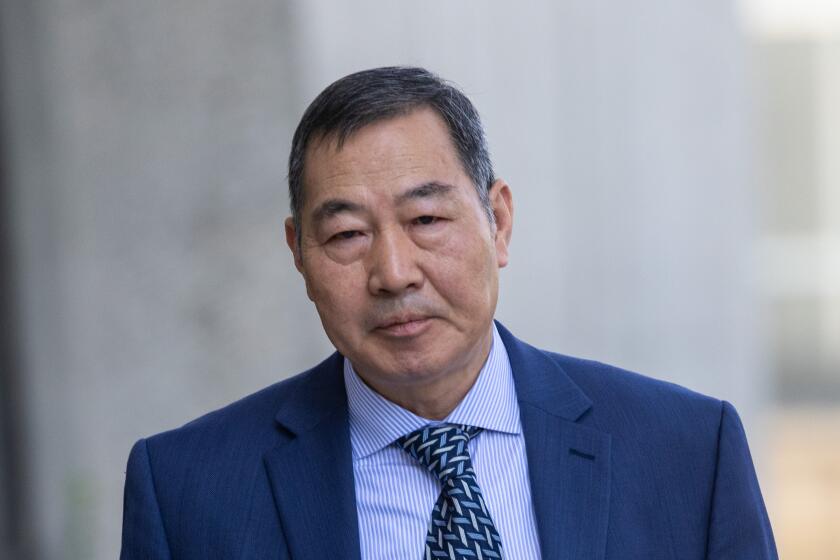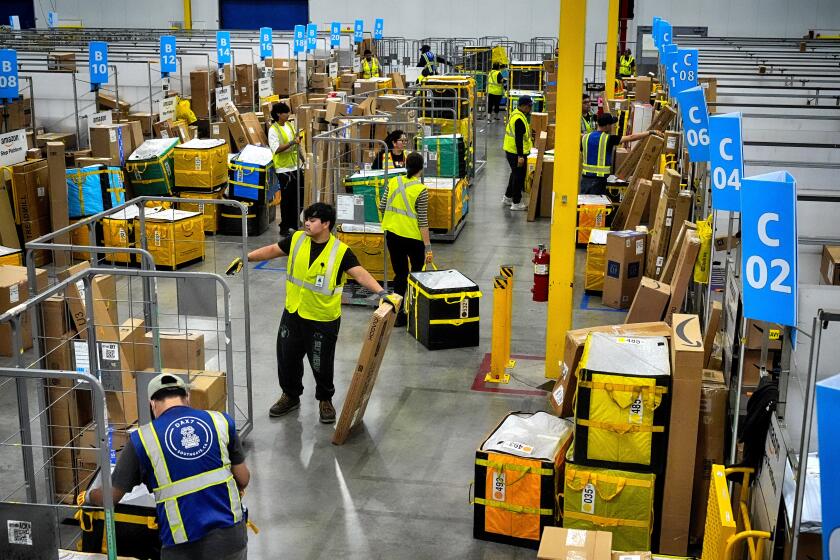Column: Same drug, different insurance tiers, crazy-high co-pays
As sky-high EpiPen costs show, price gouging of patients by greedy drug companies is one part of our dysfunctional healthcare system. Another is what may appear to be the arbitrary way that insurers decide what co-pay to charge.
Santa Ana residents William and Phyllis Stevens encountered this recently when they were both prescribed the same cream for pre-cancerous skin growths.
One had a co-pay of $20, the other a co-insurance cost of $300. And the much-higher charge was levied for a version of the medicine that was weaker than the cheaper version — yet had jumped nearly 1,500% in price since 2009.
Welcome to Crazy Town.
“There’s no good economic rationale for why this happens,” said Gerald Kominski, director of the UCLA Center for Health Policy Research. “But it happens all the time.”
Insurers’ decisions about which drugs will be placed on which pricing tier can have a significant effect on patients.
Tier 1 and Tier 2 drugs typically will be generic or commonly prescribed medications and will have lower co-pays. Drugs on higher tiers will be regarded by the insurer as “specialty” meds and will come with higher co-pays or coinsurance costs.
Co-insurance is a percentage of the drug’s cost, usually about 25%, rather than a fixed co-payment.
“What this illustrates is that there are things we don’t think about when we buy insurance,” Kominski said. “But when we use insurance, we’re in for surprises.”
He said it’s a system “that requires us to be more and more sophisticated. But no one’s that smart.”
Shana Alex Charles, an assistant professor of health sciences at Cal State Fullerton, put it like this: “Much of our insurance system flies in the face of reason.”
The Stevens’ experience comes amid the ongoing fracas over pharmaceutical heavyweight Mylan boosting the price of EpiPens by more than 400% — the latest example of a drug company seeking sky-high payments for a medication that’s been around for decades.
Families have long relied on EpiPens to administer epinephrine, a hormone that counters the potentially fatal effects of severe allergic reactions to things such as bee stings and peanuts. There’s about a dollar’s worth of epinephrine in each EpiPen, to which Mylan purchased the rights in 2007 and proceeded to impose a string of double-digit price hikes.
On Monday, Mylan announced it will introduce a generic version of the EpiPen for half the cost. But that still will mean $300 for a pack of two and potentially will give Mylan even more control over the market by discouraging other generic manufacturers from trying to compete.
William Stevens, 83, told me he and his wife were both prescribed generic fluorourcil after their dermatologist found pre-cancerous growths on their skin. They were each given a prescription for a topical cream containing 5% of the drug.
The couple is insured by Scan Health Plan of Long Beach, which provides supplemental Medicare Advantage coverage to seniors. It’s a not-for-profit organization founded in 1977.
Stevens’ 81-year-old wife filled her prescription first. Because 5% fluorourcil was a Tier 3 drug for Scan, she was charged a $20 copay.
A few weeks later, Stevens filled his own prescription. This time, the pharmacist said she was out of 5% fluorourcil but could give the 0.5% strength. However, the pharmacist warned, this was a Tier 5 drug for Scan and thus would come with a coinsurance payment of $300.
Think about that: The same exact drug at a tenth of the strength costing more than 10 times as much.
“I asked the pharmacist how that could be,” Stevens recalled. “She had no explanation.”
There’s an explanation, but it’s not a very satisfying one.
Insurers use tiered pricing to steer members to the most affordable options, usually generics. In the case of fluorourcil, the 5% formulation is generic, so that’s the one Scan placed in its cheaper Tier 3.
The 0.5% version contains the same active ingredient but isn’t generic — it’s sold under the brand name Carac. So the insurer bumped it to Tier 5.
“It’s a loony situation,” acknowledged Sharon Jhawar, Scan’s vice president of pharmacy. “It’s maddening even to us.”
Loonier still, the manufacturer of Carac, Valeant Pharmaceuticals, has indulged in price hikes that make Mylan’s greed seem miserly by comparison. Valeant has drawn fire in the past for jacking up drug prices to astronomic levels, including a more than 700% increase in the price of heart medicine Isuprel.
In 2009, Jhawar said, a 30-gram tube of Carac sold for $160. It now runs closer to $2,500 — and that’s the discounted price negotiated by most insurers, she said. Valeant’s desired price is even higher.
Remember: Same active ingredient as the generic, only less.
I asked Valeant why the price of Carac has risen nearly 1,500% since 2009. The company sent me a statement that didn’t address that question.
Instead, it said Valeant, which replaced its chief executive in March, has set up a committee that “will take a disciplined approach to reviewing the company’s pricing of drugs, and will consider the impact on patients, doctors and our healthcare industry partners.”
“While we will raise prices from time to time, we expect those price increases to be much more modest and within industry norms,” it said. “With respect to Carac, a lower-priced generic alternative is available.”
Well, that’s good news. Or maybe not.
Jhawar said Valeant gave permission last year for another drug maker, Spear Pharmaceuticals, to sell an “authorized generic” version of Carac until Valeant’s patent expires in 2021.
The price of that authorized generic? A mere $1,300 a tube.
David Lazarus’ column runs Tuesdays and Fridays. He also can be seen daily on KTLA-TV Channel 5 and followed on Twitter @Davidlaz. Send your tips or feedback to david.lazarus@latimes.com.
More to Read
Inside the business of entertainment
The Wide Shot brings you news, analysis and insights on everything from streaming wars to production — and what it all means for the future.
You may occasionally receive promotional content from the Los Angeles Times.











